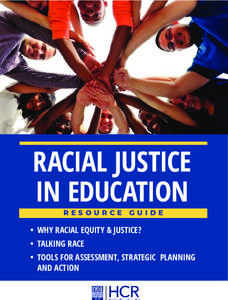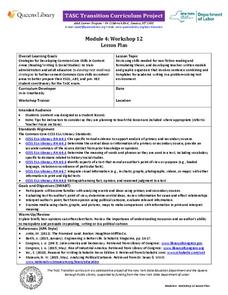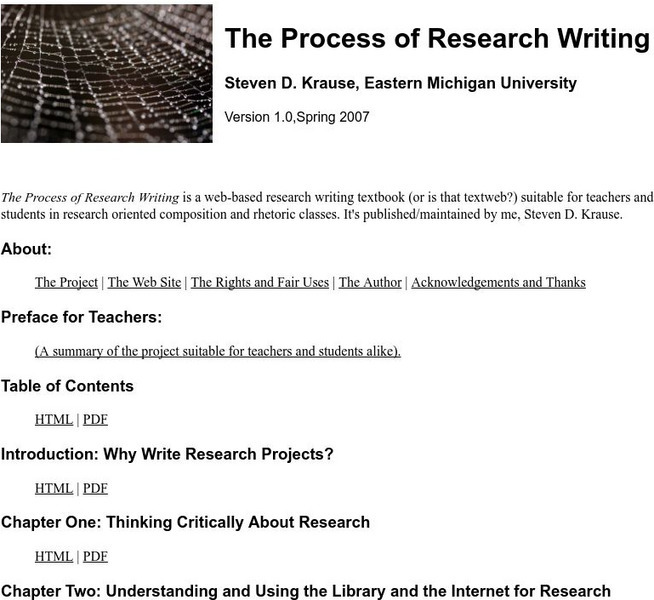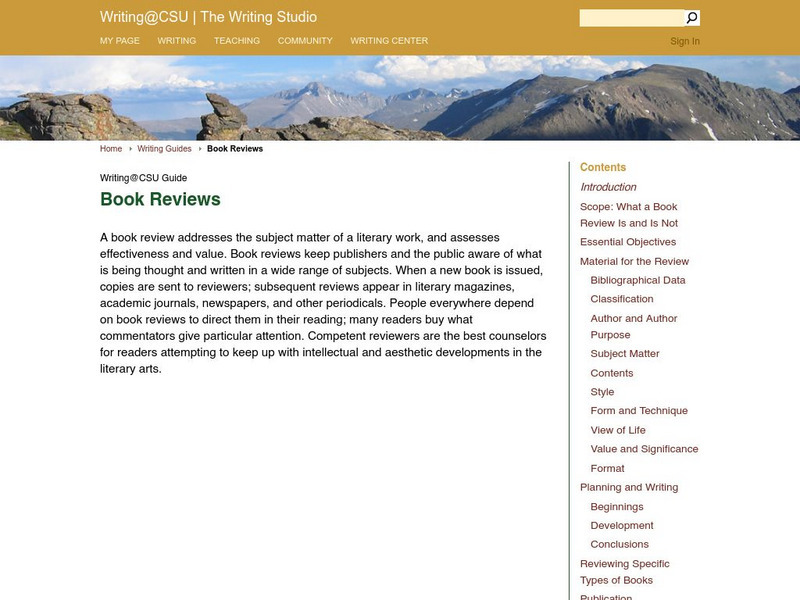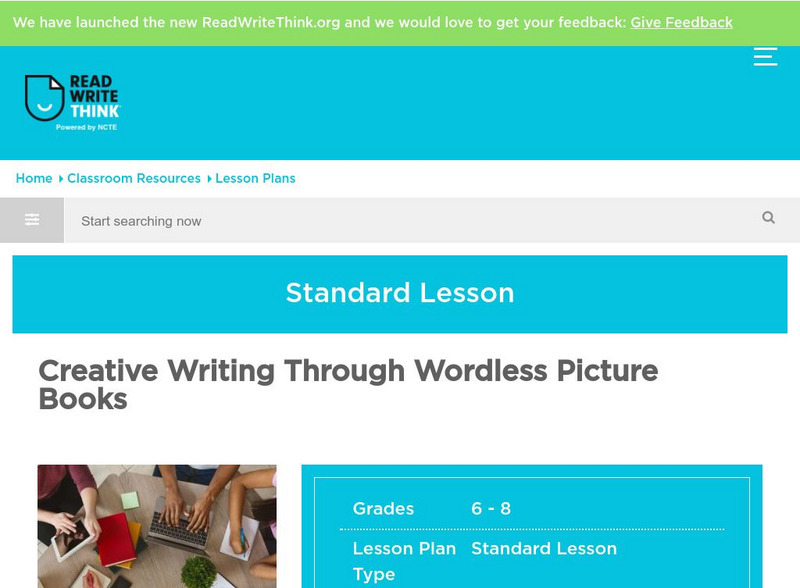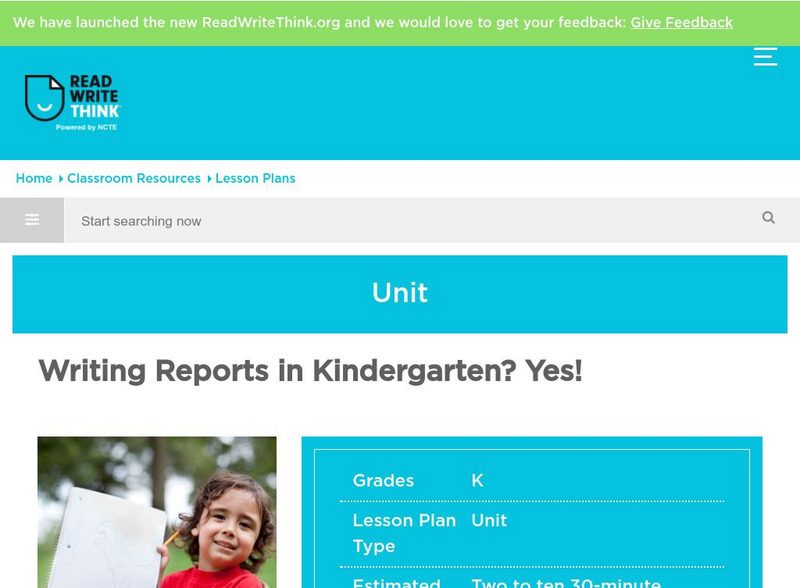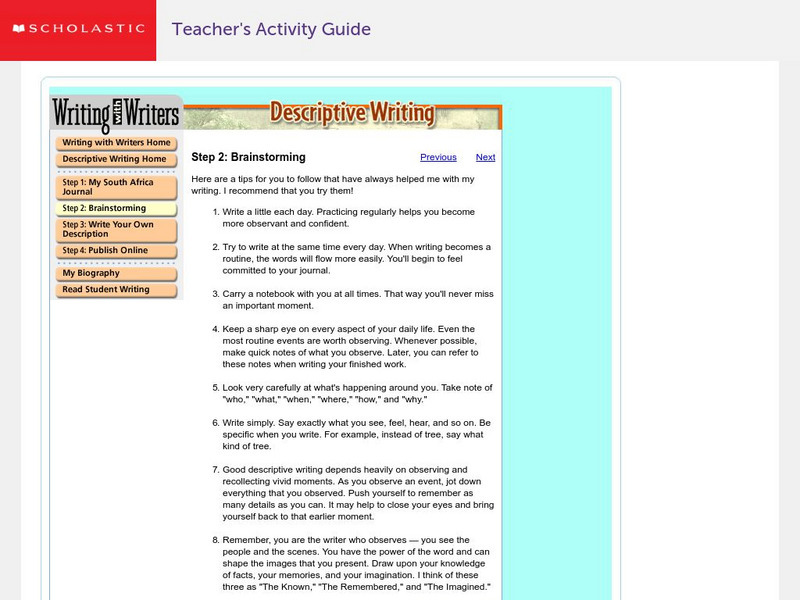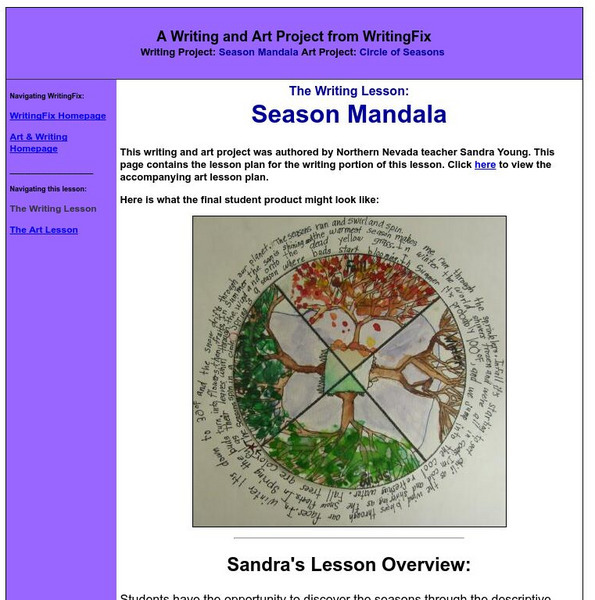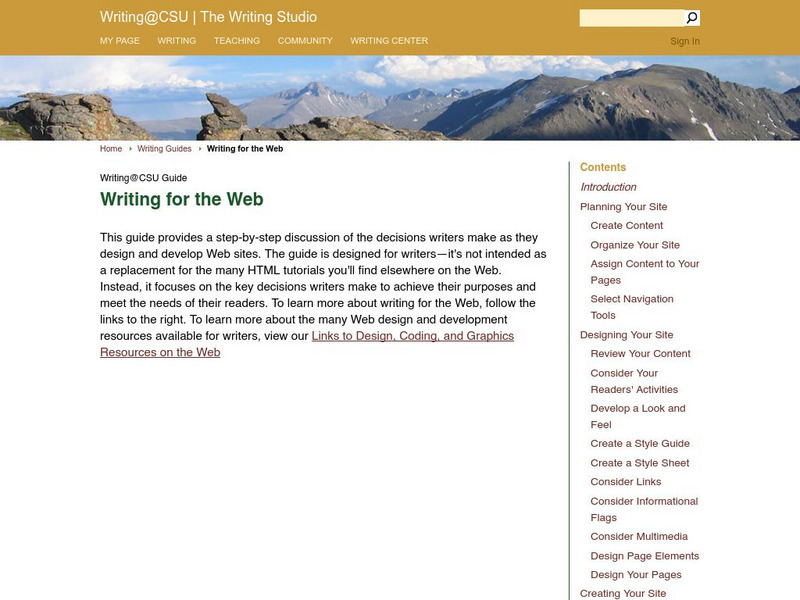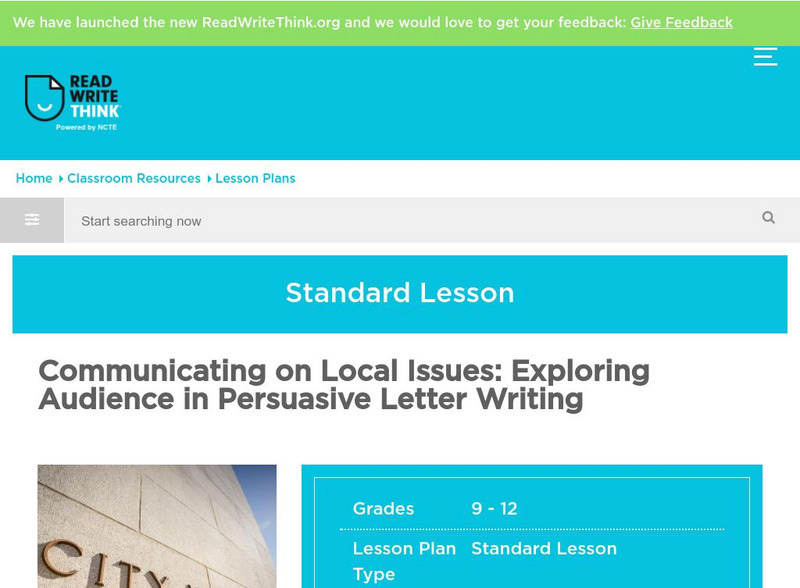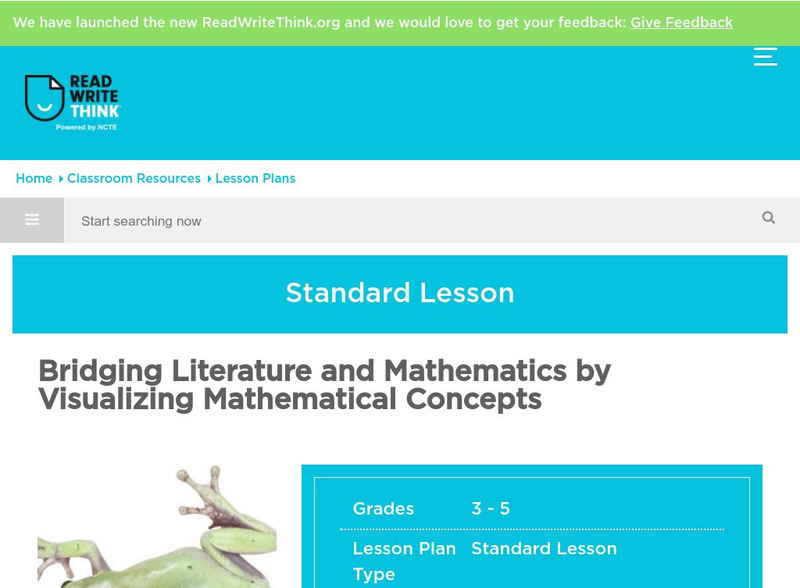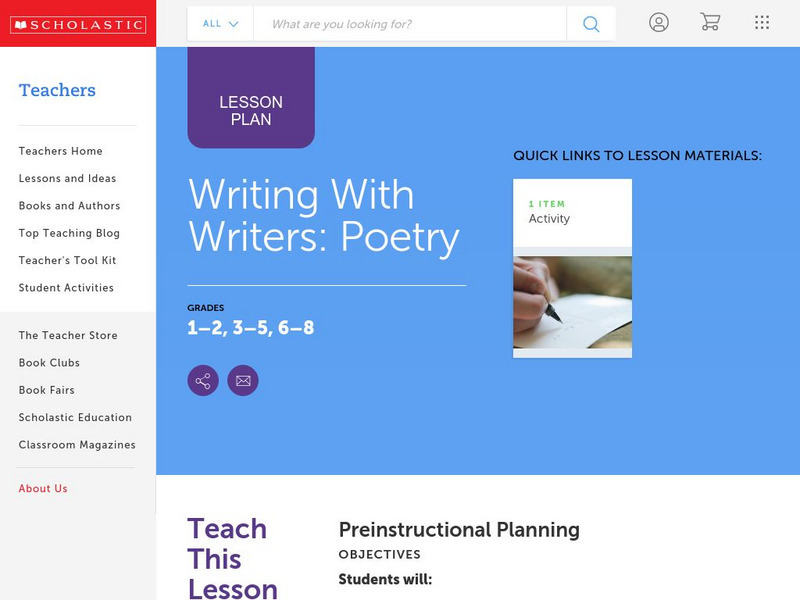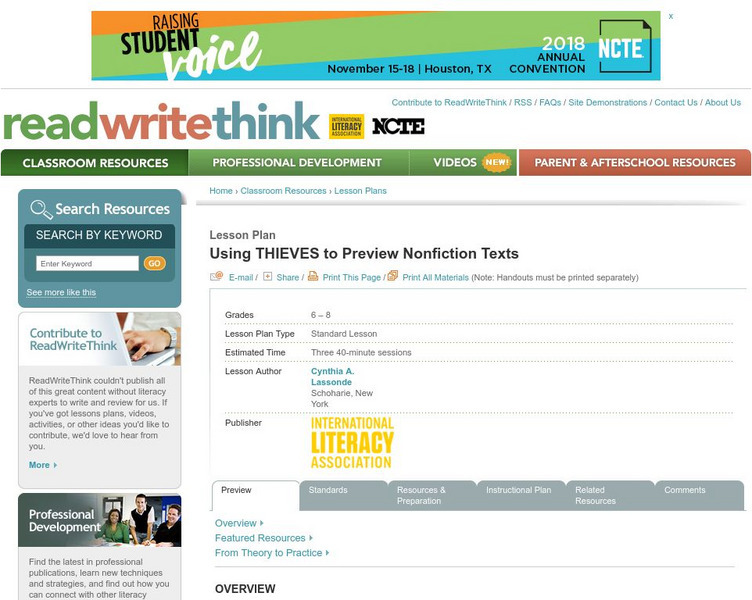New York State Education Department
TASC Transition Curriculum: Workshop 11
You'll C-E-R a difference in classroom achievement after using a helpful lesson. Designed for economics, civics, government, and US history classes, participants practice using the CER model to craft arguments about primary and secondary...
National Education Association
Racial Justice in Education Resource Guide
Strive for racial justice within your classroom community with help from an 80-page resource guide. Five modules move scholars through thoughtful, and reflective grand conversations to making a plan, then taking action. Learners write...
New York State Education Department
TASC Transition Curriculum: Workshop 10
How have educational standards evolved? Educators of adults examine expectations in the 10th workshop out of 15 to better determine how standards have grown. Participants respond to a variety of sample questions to determine how they...
EngageNY
TASC Transition Curriculum: Workshop 12
How can opinions slant facts? Workshop participants learn how to examine primary and secondary sources and identify the author's point of view. They also examine how visual art impacts the meaning and rhetoric of sources. Full of...
Other
The Process of Research Writing
This online book outlines a process for teaching research and writing in ways beyond the traditional, one-time, massive "research paper" Lots of food for thought. The chapters take you through the writing process and more. Click on the...
Colorado State University
Colorado State Writing Center: Writing a Book Review
A guide on the essential and non-essential elements of writing a book review (critical writing). Includes objectives, material, and information on planning and publication.
Better Lesson
Better Lesson: Writing an Opinion Based on Facts From a Text
Students will plan a paragraph that states their opinion and cites evidence to justify their opinion about an informational text. This lesson uses biographies since students can easily be able to write down factual information from the...
ReadWriteThink
Read Write Think: Creative Writing Through Wordless Picture Books
Need help planning ways to creatively teach your students chronological order? Here's a great place to start. While the site is specifically geared toward the middle school student, it is a teaching idea which could easily be adapted for...
Sophia Learning
Sophia: Research Questions: A Focus for Planning, Researching, and Writing
This Sophia video lesson introduces how to develop good questions for a research paper. CCSS.ELA-Literacy.CCRA.W.8; CCSS.ELA-Literacy.WHST.6-8.7 Conduct short research projects. CCSS.ELA-Literacy.WHST.6-8.7 standards are addressed in...
ReadWriteThink
Read Write Think: Writing Reports in Kindergarten
Lesson which provides three types of reports for early elementary students to share. These allow young students to see themselves as writers with something useful to contribute from an early age.
Scholastic
Scholastic: Writing With Writers: Descriptive Writing
Need help with doing a descriptive paper or personal narrative? Need a writing lesson plan? Meet Virginia Hamilton and follow her step-by-step guide to writing. When done, you are eligible for a certificate signed by this author.
PBS
Pbs Teachers: Story Writing With Arthur
This series of 12 downloadable activities teach students some basics of story writing, using books or videos from the PBS "Arthur" series as a springboard. Activities include creating story maps, asking questions about characters and...
Writing Fix
Writing Fix: The Writing Lesson: Season Mandala
In this lesson plan, learners will learn about the season through decriptive words and phrases incorporated in two different books, Have You Seen Trees? by Joanne Oppenheim and The Seasons of Arnold's Apple Tree by Gail Gibbons. They...
Colorado State University
Colorado State Writing Center: Writing for the Web
A resource for writers who are interested in writing, planning, and coding their own websites. Includes step-by-step instructions and links to further information.
ReadWriteThink
Read Write Think: Exploring Audience in Persuasive Letter Writing
Effective communication skills are critical for the present century. This unit plan stresses clear, persuasive communication that is meant to be shared with an audience beyond the classroom.
ReadWriteThink
Read Write Think: Designing Effective Poster Presentations
Contains plans for six or seven lessons that teach young scholars to create and present effective poster presentations. In addition to objectives and standards, this instructional plan contains links to PDF handouts and sites used in the...
ReadWriteThink
Read Write Think: Bridging Literature and Mathematics
Contains plans for five 50-minute interdisciplinary lessons that ask students to write about math-related, informational books such as "Actual Size" (Jenkins, 2004) and "If You Hopped Like a Frog" (Schwartz, 1999). Students use books...
ReadWriteThink
Read Write Think: Playing With Genre Through Newspapers and Short Stories
Contains plans for three lessons that ask students to compare narrative writing (short stories) to expository writing (news articles) in order to understand what makes each genre unique. In addition to objectives and standards, this...
Scholastic
Scholastic: Poetry Writing
This site comes from the Scholastic website and provides a teacher's guide to writing poetry. This lesson plan is put together very well and provides an outline of the project, learning objectives, assessment information and much more.
ReadWriteThink
Read Write Think: Discovering Memory Li Young Lee's Poem "Memonic" and the Brain
Contains plans for eight cross-curricular lessons that teach about memory and the brain using Li-Young Lee's poem "Mnemonic." In addition to objectives and standards, this instructional plan contains links to PDF handouts and sites used...
ReadWriteThink
Read Write Think: Draw a Story: Stepping From Pictures to Writing
Help young students move from drawing pictures into writing simple stories. Good plan for having students put pictures in sequential order and teaching them about sequential order.
ReadWriteThink
Read Write Think: Expository Escapade: Detective's Handbook
Working on higher-level thinking skills with your readers is made easier with this lesson. You will have your students connect with and analyze a mystery story at their grade-appropriate level. Lesson plan, printable worksheets, and...
ReadWriteThink
Read Write Think: Using Thieves to Preview Nonfiction Texts
Contains plans for three lessons that introduce a nonfiction prereading strategy with the acronym THIEVES, which stands for Title, Headings, Introduction, Every first sentence, Visuals and vocabulary, End Questions, and Summary. In...
ReadWriteThink
Read Write Think: Cover to Cover: Comparing Books to Movies
A 7-lesson unit where students critically analyze how a film adaptation portrays a novel to see what impact it had on the retell of the story. They then design a movie DVD cover and write a DVD insert based on what they have learned. The...

